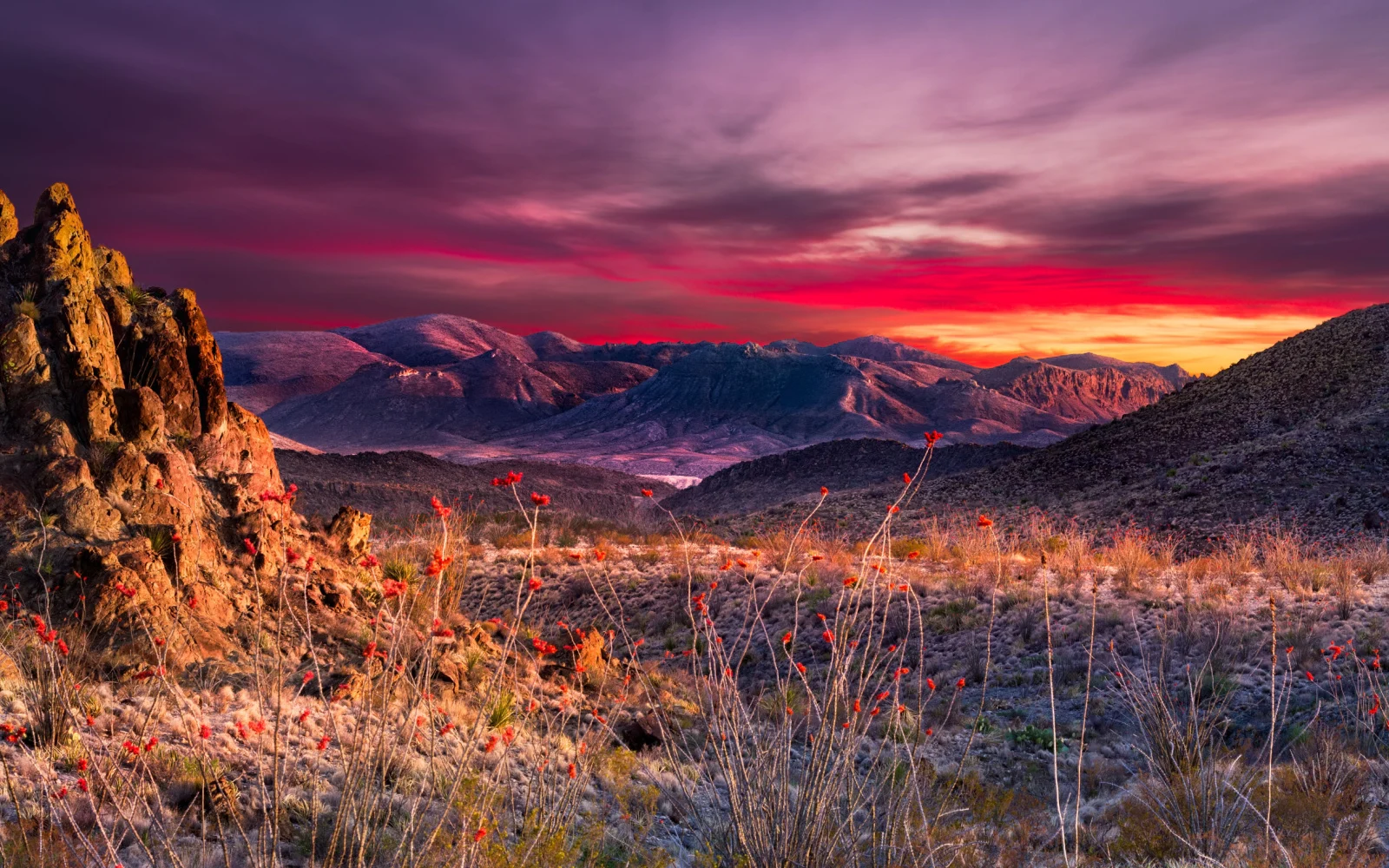What's the best time to visit Big Bend National Park?
The best times to visit Big Bend National Park are in spring (March-April) and fall (October-November) when temperatures are mild and ideal for outdoor activities. The park’s extreme weather includes hot summers and cold winters, making these seasons the most comfortable for visitors. Park facilities and ranger programs are mostly available from November to April, coinciding with the best visiting periods.
Big Bend National Park in Texas sprawls over one million acres of land, covering desert and mountains. It’s popular among lovers of remote nature thanks to its solitary landscape.
The park covers the inhospitable landscapes of the Chihuahuan Desert, where you can see stunning cacti, resilient yucca plants, and dramatic desert landscapes. Climb the Chisos Mountains for the best views, or paddle down the Rio Grande to see this stunning river that defines life in this part of the United States.
Big Bend National Park is a remote, inhospitable part of the United States, so a visit requires careful planning, including picking the right season to go. But don’t worry — we’ll show you this and more below; let us be your guide!
Overall Best Time to Visit Big Bend National Park
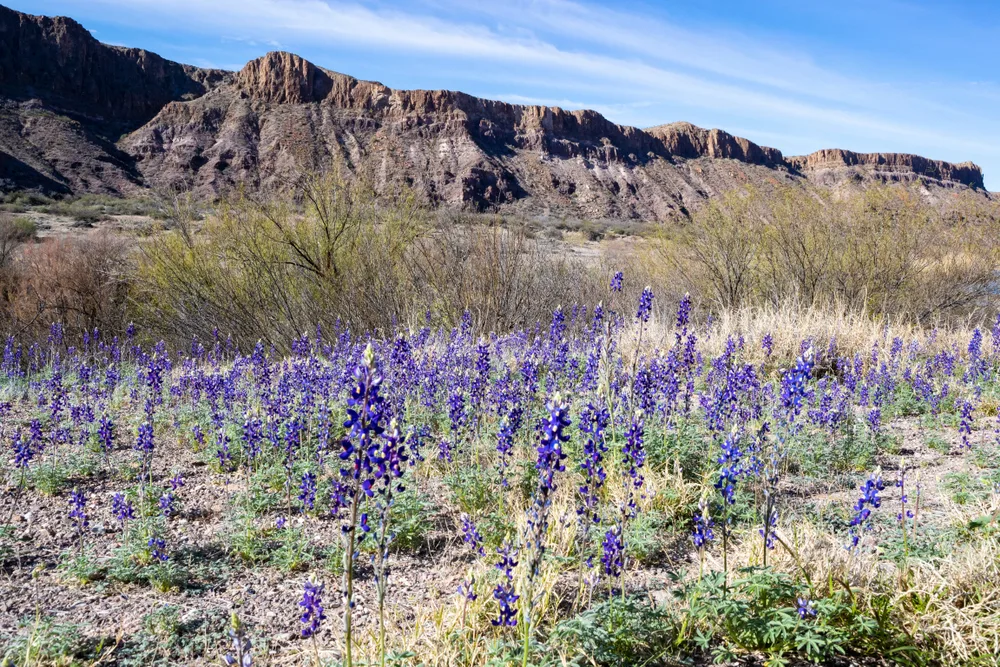
Fred LaBounty/Shutterstock
The best time to visit Big Bend National Park is during the fall (October-November) or spring (March-April), when temperatures in the desert are more manageable for exploring.
Much of Big Bend National Park is located in the Chihuahuan Desert, which like other places with desert climates, has very extreme temperatures. Summers are extremely hot, with temperatures well over 120 degrees.
What many people don’t expect is that in the winter, temperatures can get very cold, especially at night when they are often below freezing. Spring and fall are the best choices for visiting Big Bend National Park because they have the least extreme conditions.
March to April, average daily high temperatures are 75-83 degrees Fahrenheit, while at night temperatures are around 50 degrees.
In the early fall, temperatures during the day are usually in the low 80s, before falling to around 70 degrees in November. Nighttime temperatures are usually 20-30 degrees cooler than the daytime weather but are still not too cold.
Average low temperatures in October are around 57 degrees, which is still pleasant weather for camping. The most important thing about this weather is that it is safer for hiking and other outdoor activities.
The extreme heat of the desert can cause dehydration very quickly, so hikers must carry plenty of water and protect themselves from the sun according to park safety recommendations. Since the heat is less intense in spring and fall, you’re not in as much danger, but you should still be careful.
The weather is ideal for all of the outdoor activities that visitors can do in Big Bend, such as:
- Driving
- Hiking
- Canoeing
- Cycling
- Stargazing
Big Bend National Park also operates on a different schedule from many other places in the National Park system. Most visitor centers and ranger programs operate from November to April, but close during the hot summer.
Ranger-guided programs include guided hikes, talks, and events geared towards children such as the Junior Ranger program. These are available from late fall into spring.
Cheapest Time to Visit Big Bend National Park
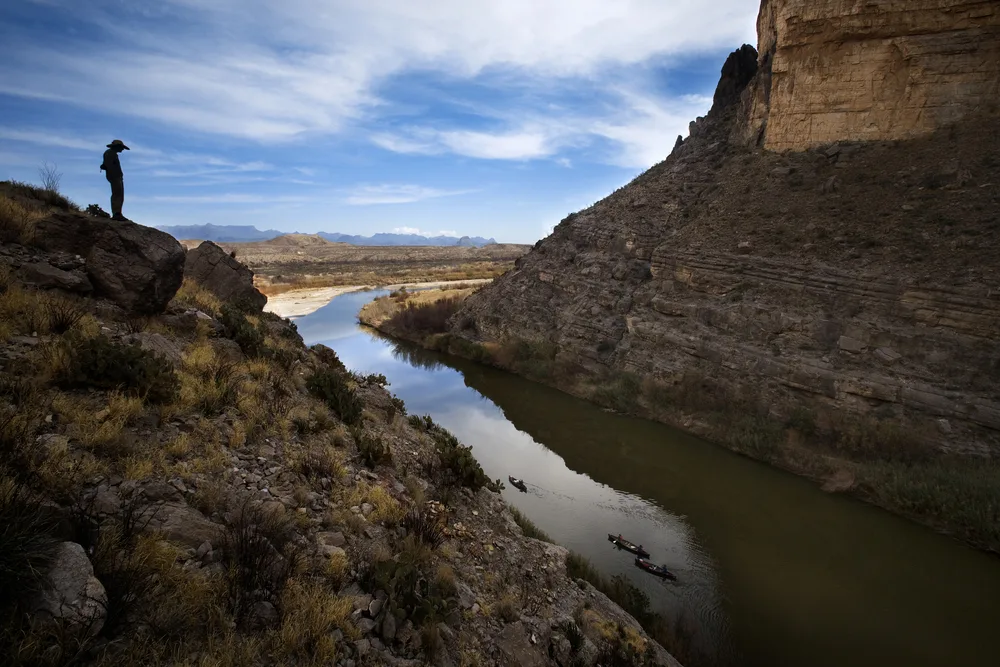
Tom Baker/Shutterstock
The cheapest time to visit Big Bend National Park is during the slower seasons, such as fall and mid-winter, when you can find some discounts.
Although accommodations around Big Bend cost the least in the summer, when demand is lowest, we don’t recommend visiting during this time. You can find pockets of time in the fall and winter when you can get 10-15% discounts on accommodation compared to peak season prices.
The key is to avoid major holidays such as Christmas, Thanksgiving, and spring break. It doesn’t make much sense to time your visit to Big Bend National Park based on when you can save money since most costs associated with visiting are fixed.
There are few accommodation options, so their prices don’t change much with demand. Camping, which many visitors opt to do, has the same fees and reservation surcharges all year long.
The entrance fee is also the same all year long. Getting to the park depends more on the price of gas than the season.
The closest regional airport is Midlands-Odessa National Park, which is over 200 miles away. The closest major airport is El Paso Airport, which is about 362 miles away. You will have to rent a car and drive.
Least Busy Time to Visit Big Bend National Park
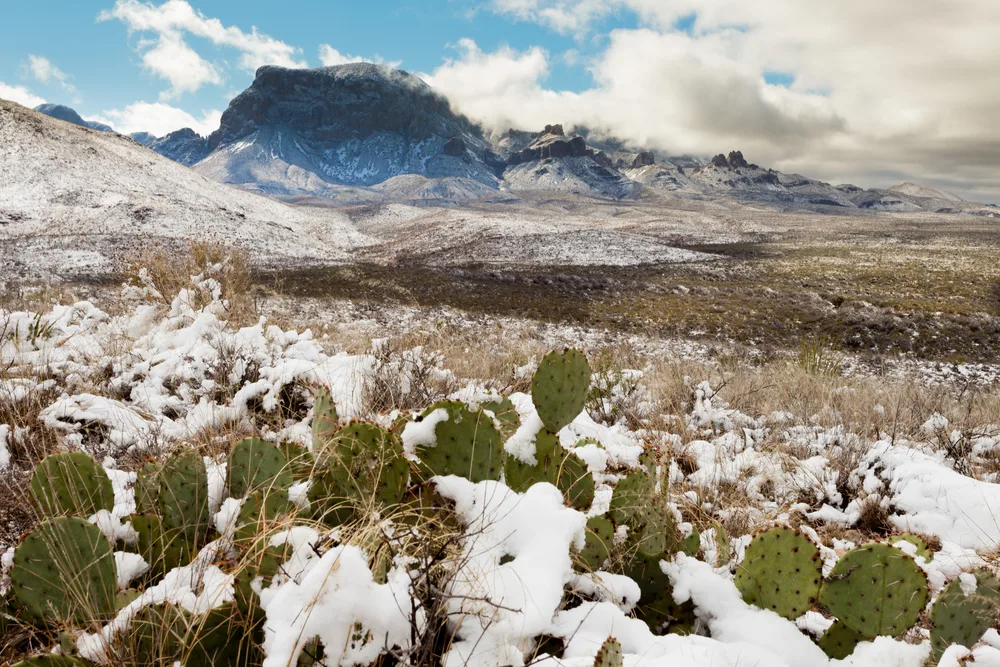
Pi-lens/Shutterstock
The least busy time to visit Big Bend National Park while still having good weather is in the fall, while the middle of winter can also yield some quieter days.
Big Bend National Park gets a lot of visitors throughout the high season, which runs from October to April, but you can beat the crowds by visiting outside of major holidays.
Park authorities advise visitors to avoid Thanksgiving, Christmas, New Year’s, spring break, and holiday weekends such as President’s Day Weekend. At the beginning of this season, in the fall, you can avoid the worst of the crowds.
Temperatures in the park are still quite hot in October, but not as bad as in the summer. The middle of winter, January and February, is alright if you want to maneuver away from the crowds. There are fewer holidays during this time once New Year’s is over, which means fewer crowds.
Just check the Texas school calendar to make sure you aren’t visiting during a holiday weekend, when you’ll see more crowds. Weekdays tend not to have as many people.
The middle of winter brings extreme temperatures to Big Bend National Park. Daytime temperature averages for January are 61 degrees Fahrenheit, but the park can get days that are above 80 degrees. At night, temperatures drop suddenly to around freezing.
Bring layers, especially if you are planning to camp overnight. The low-lying desert areas have more extreme temperature fluctuations than up in the mountains.
Worst Time to Visit Big Bend National Park
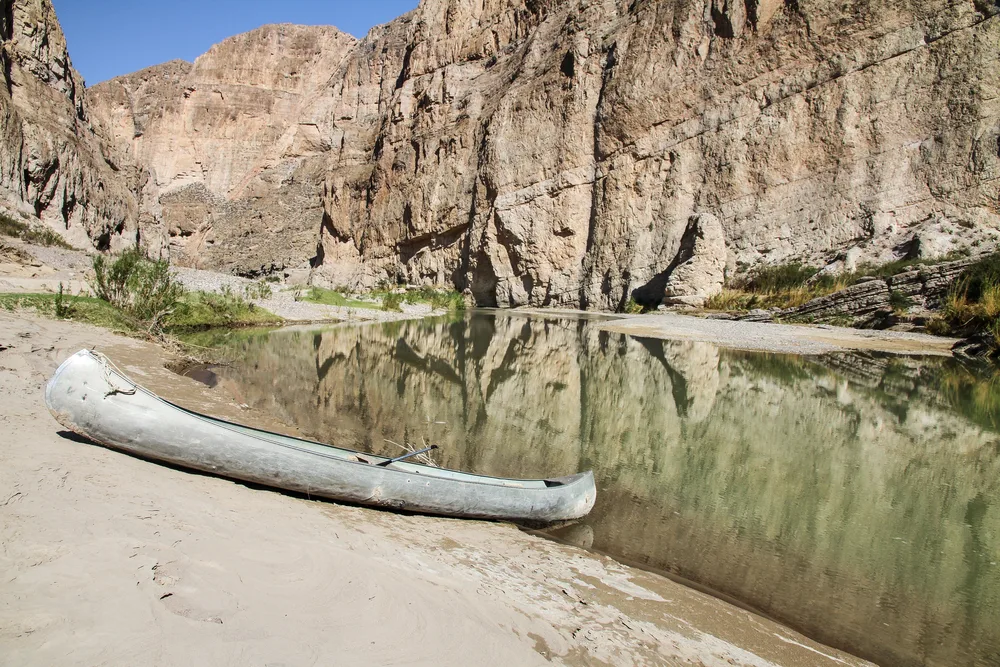
Marten Lagendijk/Shutterstock
The worst time to visit Big Bend National Park is during the summer, when temperatures are so hot that it is unsafe to hike. Although summer is the least busy time to visit, and accommodations nearby may be at a discount, we don’t recommend visiting during this season for your personal safety.
Average high temperatures are around 95 degrees during the summer, but most days are well above 100 degrees Fahrenheit. Hiking during these scorching conditions is not recommended due to the high risk of dehydration and heat stroke.
In the remote wilderness of the park, it is highly likely that if something happens to you, help will not reach you in time.
Hikers have even died, such as the stepfather and stepsons that died while hiking in 119 degree heat in June 2023. Summer also brings thunderstorms, which can cool things down in the park and make hiking more pleasant but can also bring flash floods.
Others have been stuck in flooded canyons and low-lying areas before. If you plan to visit Big Bend National Park during the summer, it’s very important to follow these safety tips:
- Move out of low-lying areas as soon as you spot clouds.
- Carry enough water (at least two gallons per person per day in the summer).
- Always let someone know what trail you are taking so they can call for help if you don’t return.
- Avoid high areas during thunderstorms.
Be sure to check out the park’s safety advice before going on a summer hike.
Big Bend National Park by Month: Climate & Activities
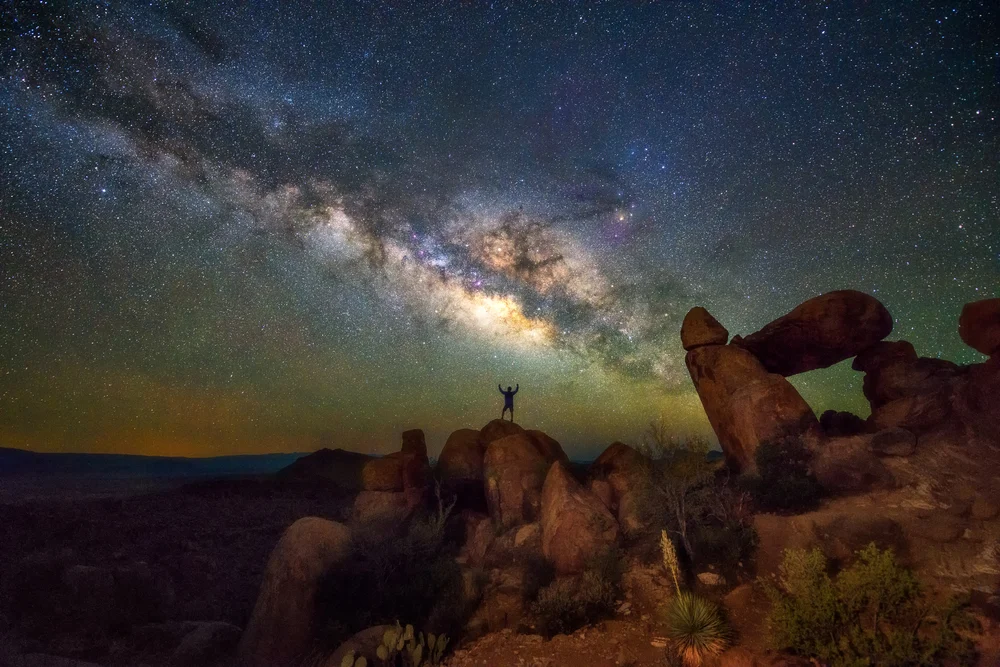
Wisanu Boonrawd/Shutterstock
Still unsure about the best time to visit Big Bend National Park? Take a look at our summary of the weather and climate by month below:
January
January in Big Bend National Park offers cool, often sunny weather, with temperatures ranging from 4 to 17°C (39-63°F). This month is ideal for hiking on trails like the Santa Elena Canyon Trail, enjoying the desert’s serene beauty, and stargazing under clear winter skies.
February
February continues with mild weather, perfect for exploring the Chisos Mountains, bird watching (as migratory birds begin to arrive), and visiting the historic Hot Springs along the Rio Grande.
March
As spring approaches, temperatures in Big Bend range from 9 to 24°C (48-75°F). March is great for wildflower viewing, especially the bluebonnets and ocotillo blooms, and hiking in lower elevation areas like the Boquillas Canyon.
April
April brings warmer weather, with temperatures around 13 to 28°C (55-82°F). Enjoy scenic drives along the Ross Maxwell Scenic Drive, explore the Balanced Rock at Grapevine Hills, and experience the cool waters of the Rio Grande on a canoe or rafting trip.
May
May sees warmer temperatures from 18 to 33°C (64-91°F). It’s an excellent time for early morning hikes to beat the heat, visiting the Fossil Discovery Exhibit, and enjoying the panoramic views from the South Rim.
June
June brings hot, dry weather, with temperatures between 23 to 38°C (73-100°F). Early morning or late evening hikes are best, like the Lost Mine Trail, and cooling off in the shade of Cottonwood Campground.
July
July is very hot in Big Bend National Park, with temperatures from 24 to 39°C (75-102°F). Early morning wildlife viewing, enjoying the night skies, and visiting the Panther Junction Visitor Center for exhibits and information are ideal.
August
August continues with hot weather, offering temperatures from 24 to 38°C (75-100°F). Take scenic drives through the park, explore the Castolon Historic District, and enjoy stargazing programs led by park rangers.
September
As fall begins, temperatures in Big Bend range from 20 to 34°C (68-93°F). September is perfect for hiking in the cooler parts of the day, bird watching during the fall migration, and exploring the Langford Hot Springs.
October
October sees cooler temperatures from 14 to 28°C (57-82°F). Enjoy the fall colors in the Chisos Mountains, explore the park’s many trails with more comfortable weather, and visit the ghost town of Terlingua nearby.
November
Fall temperatures in November range from 8 to 22°C (46-72°F). This month is ideal for pleasant day hikes, scenic drives to see the changing foliage, and enjoying the quieter off-peak season in the park.
December
Winter brings cooler temperatures ranging from 4 to 17°C (39-63°F). December offers a peaceful park experience, with opportunities for hiking, photography, and enjoying the unique landscape with fewer visitors.
Frequently Asked Questions
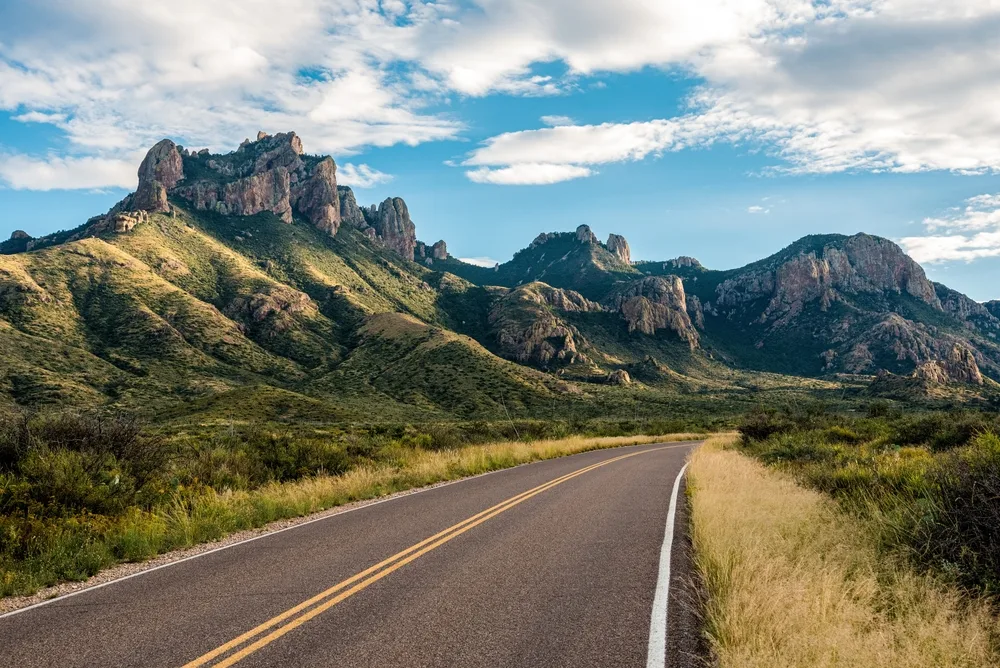
ImagoDens/Shutterstock
Here are just some of the best questions people have asked about visiting Big Bend National Park:
What is the best month to visit Big Bend National Park?
The best month to visit Big Bend National Park is November, which is before the park gets too crowded, but when most amenities are open. The weather is also safe for hiking.
How many days do you need in Big Bend National Park?
You should spend two or three days in Big Bend National Park. Stay for at least one night to check out the amazing night sky. Don’t forget to budget time for transport since it takes about a day to drive from the nearest city.
When is the busiest time at Big Bend National Park?
The busiest time at the park is the spring. Big Bend gets the most visitors during spring break, which is in mid-March to April. Other holiday weekends are also busy.
Can you enter Big Bend at any time?
Park entrances are open 24 hours a day. However, fee stations and visitor centers are only open from 7:30 AM or 9:00 AM, depending on the season.
Is Big Bend worth it?
Lovers of the desert and nature will think Big Bend is worth it. However, if you only have limited time in Texas or the United States, it may not be worth it since it’s so hard to get to.
So, What’s the Best Time to Visit Big Bend National Park?
The best time to visit Big Bend National Park is during its high season, which runs from October to April, when conditions are safe for visitors. Spring and fall have the best weather. Winter has more extreme temperatures, but fewer visitors outside of holiday weekends.
So, with so much to see and do and plenty of amazing times to visit, what are you waiting for — book your trip today and experience for yourself all that Big Bend National Park has to offer. Happy travels!



